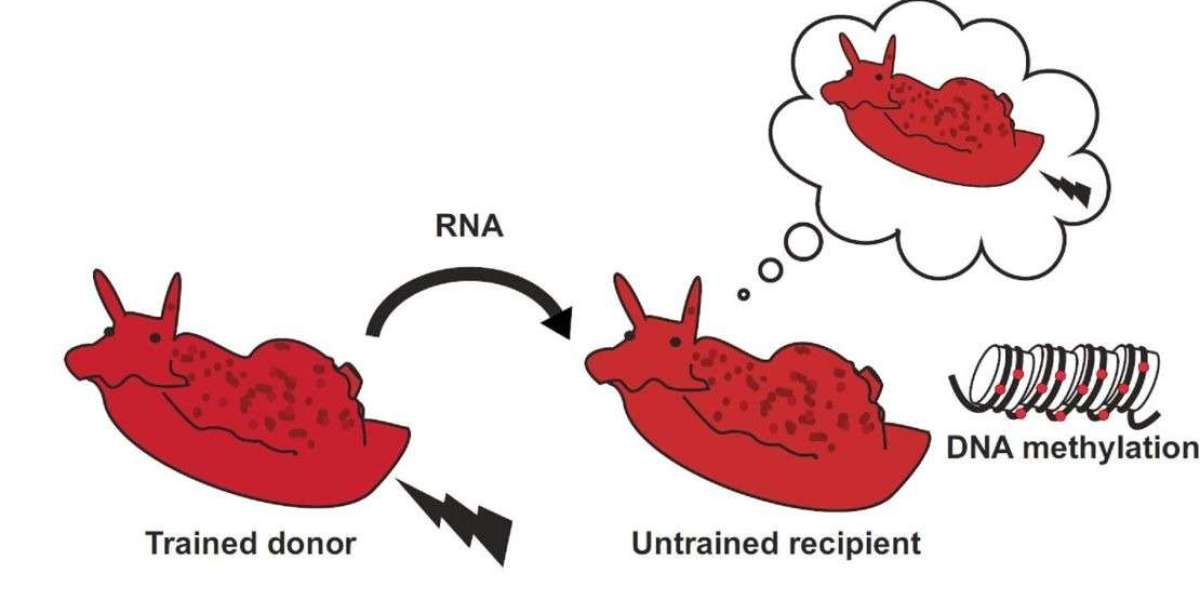Introduction
Imagine being able to pass down memories, knowledge, or fears to future generations without them ever experiencing the event firsthand. Sounds like something out of science fiction, right? However, researchers have discovered that memory transfer is not just a theoretical concept—it might be possible through RNA and epigenetics.
In a 2018 study at UCLA, scientists successfully transplanted memory from one marine snail to another by injecting RNA (ribonucleic acid) extracted from trained snails. This astonishing breakthrough challenges our traditional understanding of how memory is stored and raises exciting questions about genetic inheritance, neurology, and even artificial intelligence.
The Groundbreaking Memory Transfer Experiment
Step 1: Training the Snails
Researchers used marine snails (Aplysia californica), a species often used in neuroscience due to its simple nervous system.
- The snails were trained using mild electric shocks to their tails.
- As a result, the snails developed a defensive withdrawal reflex, curling up when touched.
- This reflex became more pronounced and lasted about 50 seconds—a sign that the snails had learned to associate touch with danger.
Step 2: Extracting and Injecting RNA
Once the trained snails exhibited this learned response, the researchers:
- Extracted RNA from their nervous systems.
- Injected this RNA into untrained snails, which had never been exposed to shocks.
Step 3: Transferred Memory Response
Amazingly, after the RNA injection:
- The untrained snails showed the same defensive response as the trained snails, despite never having been shocked.
- They contracted their bodies for 40-50 seconds—a reaction identical to the trained group.
- Meanwhile, control snails injected with RNA from unshocked snails showed no change in behavior, confirming that RNA played a direct role in memory transfer.
How Does This Work?
Traditionally, scientists believed that memory was stored at synapses (connections between neurons). However, this experiment suggests that RNA might also encode and transmit memory-related information in the brain.
RNA is primarily known for carrying genetic instructions for protein synthesis, but this study hints that it may also play a role in modifying neural function and storing learned experiences. If proven in higher organisms, this could revolutionize how we understand learning, memory loss treatments, and artificial intelligence training.
Memory Inheritance Across Generations
This idea isn’t entirely new. A 2013 study in Nature Neuroscience showed that memory-like responses could be passed down in mammals:
- Mice were trained to fear the smell of cherry blossom through mild electric shocks.
- Their offspring and even grandchildren showed heightened sensitivity and avoidance of the scent without ever experiencing it firsthand.
- Scientists found epigenetic modifications in the sperm—specific genes linked to odor sensitivity were more active.
Other studies suggest learned behaviors can be inherited for up to 14 generations, potentially explaining instinctive fears in animals and humans.
Implications for Science and Medicine
These discoveries open up exciting possibilities:
- Memory restoration in patients with Alzheimer’s or dementia.
- Trauma and PTSD treatment by modifying RNA or epigenetic markers.
- Faster AI learning models inspired by biological memory transfer.
Conclusion
The ability to transfer memory and experiences biologically is a fascinating yet mysterious field of research. The idea that RNA and epigenetics could store and transmit knowledge challenges long-standing beliefs in neuroscience. While these studies are in early stages, they could one day redefine memory storage, learning, and even how knowledge is passed down across generations.








